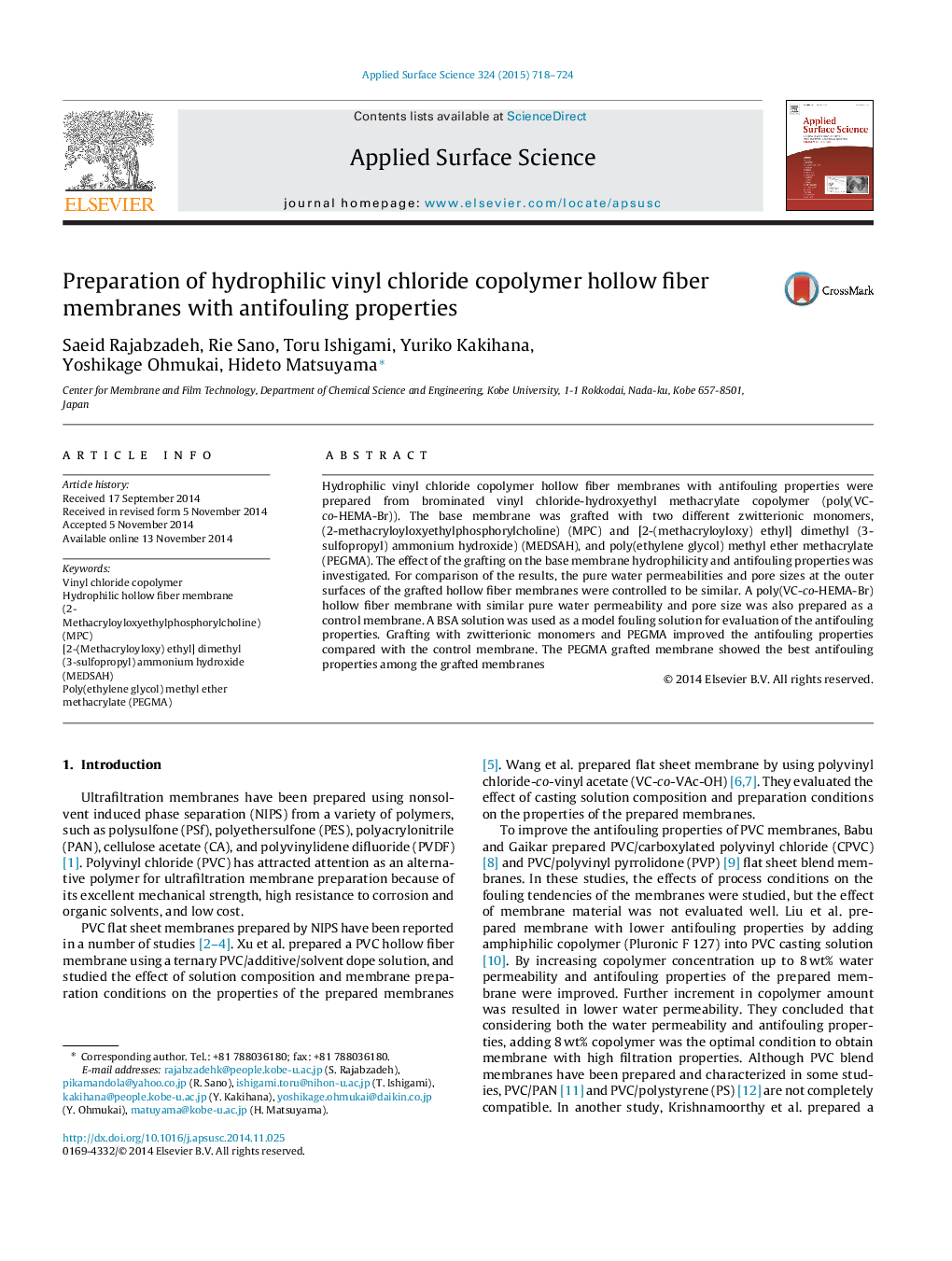| Article ID | Journal | Published Year | Pages | File Type |
|---|---|---|---|---|
| 5349087 | Applied Surface Science | 2015 | 7 Pages |
Abstract
Hydrophilic vinyl chloride copolymer hollow fiber membranes with antifouling properties were prepared from brominated vinyl chloride-hydroxyethyl methacrylate copolymer (poly(VC-co-HEMA-Br)). The base membrane was grafted with two different zwitterionic monomers, (2-methacryloyloxyethylphosphorylcholine) (MPC) and [2-(methacryloyloxy) ethyl] dimethyl (3-sulfopropyl) ammonium hydroxide) (MEDSAH), and poly(ethylene glycol) methyl ether methacrylate (PEGMA). The effect of the grafting on the base membrane hydrophilicity and antifouling properties was investigated. For comparison of the results, the pure water permeabilities and pore sizes at the outer surfaces of the grafted hollow fiber membranes were controlled to be similar. A poly(VC-co-HEMA-Br) hollow fiber membrane with similar pure water permeability and pore size was also prepared as a control membrane. A BSA solution was used as a model fouling solution for evaluation of the antifouling properties. Grafting with zwitterionic monomers and PEGMA improved the antifouling properties compared with the control membrane. The PEGMA grafted membrane showed the best antifouling properties among the grafted membranes
Related Topics
Physical Sciences and Engineering
Chemistry
Physical and Theoretical Chemistry
Authors
Saeid Rajabzadeh, Rie Sano, Toru Ishigami, Yuriko Kakihana, Yoshikage Ohmukai, Hideto Matsuyama,
